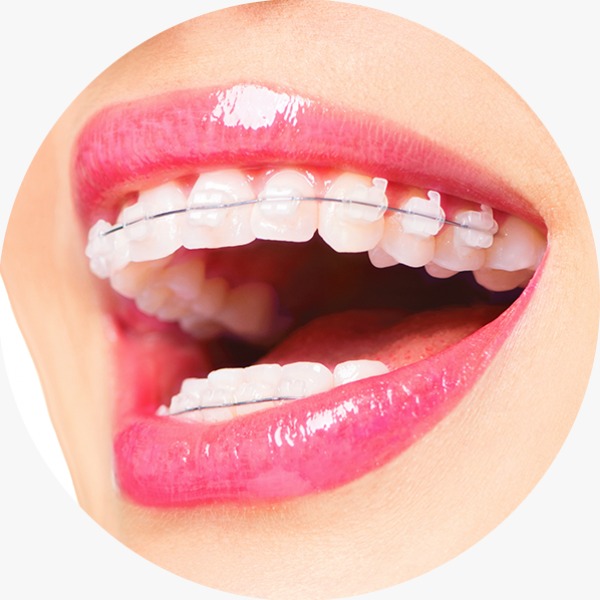
Children Braces Treatment
Braces are orthodontic appliances that are commonly used to correct misaligned teeth and jaws. Braces can be used in children as well as adults, and there are different types of braces available depending on the specific needs of the patient.
In children, braces are often used to correct issues with tooth alignment or bite, such as overbite, underbite, crossbite, or overcrowding. The goal of braces treatment is to straighten the teeth and improve the function and appearance of the bite.
The process of getting braces for a child typically involves the following steps
Consultation: The first step is to schedule a consultation with an orthodontist, who will evaluate the child’s teeth and recommend the appropriate treatment plan.
Placement of braces: Once the treatment plan has been established, the orthodontist will place the braces on the child’s teeth. The process typically takes about an hour, and the child may experience some discomfort or soreness in the days following the placement.
Adjustment appointments: The child will need to attend regular adjustment appointments, during which the orthodontist will make any necessary adjustments to the braces to ensure that they are working properly.
Maintenance and care: It is important for the child to maintain good oral hygiene during the course of the braces treatment, including regular brushing and flossing, as well as avoiding certain foods that can damage the braces.
Here are some key points about children braces
Consultation: The first step is to schedule a consultation with an orthodontist, who will evaluate the child’s teeth and recommend the appropriate treatment plan.
Placement of braces: Once the treatment plan has been established, the orthodontist will place the braces on the child’s teeth. The process typically takes about an hour, and the child may experience some discomfort or soreness in the days following the placement.
Adjustment appointments: The child will need to attend regular adjustment appointments, during which the orthodontist will make any necessary adjustments to the braces to ensure that they are working properly.
Maintenance and care: It is important for the child to maintain good oral hygiene during the course of the braces treatment, including regular brushing and flossing, as well as avoiding certain foods that can damage the braces.
The length of time that a child will need to wear braces can vary depending on the severity of the dental issues being corrected, but most treatments last between one and three years. Following the completion of the braces treatment, the child will likely need to wear a retainer to maintain the results of the treatment.
Here are some key points about children braces
Purpose
Braces are primarily used to straighten crooked or misaligned teeth, close gaps between teeth, and correct bite issues such as overbite (upper teeth overlap the lower teeth), underbite (lower teeth overlap the upper teeth), crossbite (teeth don’t meet properly), or open bite (teeth don’t touch when biting).
Types of braces
There are several types of braces available for children, including:
a. Traditional metal braces: These are made of stainless steel brackets and wires. Metal braces are the most common type and are highly effective in correcting a wide range of dental issues.
b. Ceramic braces: These braces use tooth-colored or clear ceramic brackets that blend with the teeth, making them less noticeable than metal braces. Ceramic braces are popular for their cosmetic appeal.
c. Lingual braces: Lingual braces are placed on the inner side of the teeth, making them virtually invisible from the outside. They provide effective tooth alignment while being hidden from view.
d. Clear aligners: Aligners, such as Invisalign, are a series of clear, removable trays that gradually shift the teeth into proper alignment. Clear aligners are popular among teenagers due to their removable and virtually invisible nature.
Treatment process
The process of getting braces typically involves the following steps:
a. Consultation: The child visits an orthodontist for an initial examination, where the orthodontist assesses the dental condition and recommends the appropriate treatment plan.
b. Braces placement: In the next appointment, the orthodontist attaches the braces to the teeth. This process involves bonding brackets to the teeth using a special adhesive and connecting them with archwires.
c. Adjustments: Throughout the treatment duration, periodic visits are required for adjustments. The orthodontist tightens or replaces the archwires to gradually move the teeth into the desired position.
Duration of treatment
The duration of orthodontic treatment with braces can vary depending on the severity of the dental issue, the type of braces used, and the child’s response to treatment. Typically, treatment can last anywhere from several months to a few years.
Oral hygiene
Children with braces need to pay extra attention to oral hygiene. It’s important to brush and floss thoroughly, ensuring that all areas around the braces are clean. Orthodontists may provide special tools, such as floss threaders or interdental brushes, to facilitate cleaning.
Retention phase
After the braces are removed, a retention phase begins. The child will be provided with retainers to wear, which help maintain the new tooth positions and prevent relapse.
Gum Contouring
Also known as gum reshaping or tissue sculpting, this procedure is performed to correct an uneven gum line or excessive gum tissue. It involves removing or reshaping the gum tissue to create a more balanced and proportionate smile.
It’s essential for parents to consult with a qualified orthodontist to assess their child’s specific needs and determine the most suitable treatment options for their dental condition. The orthodontist will guide the child and their family throughout the treatment process, ensuring the best possible outcome for a healthy and beautiful smile.
What Can I Expect With Adult Braces?
Just because you may be out of adolescence, doesn’t mean you can’t pursue your dream smile!
Adult Braces –
Adults tend to be far more careful with their braces than younger people are known to be. As an adult, you may view it as an investment in yourself and your oral health and will see to it that you’re getting the most out of that investment. Adults may be more determined to complete their treatment on time as well, leaving little room for error and careless habits.
We want to provide our patients with all the resources they’ll need so they’ll fully understand their orthodontic treatment, why they may need it, and all the benefits adult braces can have. Let’s first talk about why adult braces may be needed!
Adult Braces –
If you’ve had a relatively crooked smile your whole life, some of your friends and family may be asking you why now? You’ve gone your whole life with the same smile, what’s the point of getting braces at this stage in your life?
It’s never too late to get braces – they work for patients of almost all ages and have been proven to combat minor to severe dental irregularities across the board. However, they aren’t only used for straightening teeth.
Braces can correct irregularities that have the potential to lead to more serious problems down the road than just having a crooked smile. Braces correct common dental issues such as gaps, overlapping, and a misaligned bite. All of these issues can make brushing and flossing difficult, and may even lead to plaque buildup and a future of gum disease.
The Consultation –
Once you’re in that chair, your chosen orthodontist will perform a full examination that includes advanced technology such as x-rays of your teeth, bite, jaw, and the general relation all of these factors have to each other. This will give them an idea of what irregularities you’re facing, how severe they are, and what your treatment may look like.
Once they’ve come up with a plan, they’ll share their diagnosis with you, and discuss the treatment plan they feel will best suit your orthodontic needs. Your diagnosis isn’t the only thing that will have to be discussed, however; braces involve a financial conversation, as well as one that revolves around the desired timeline, and how willing you are to comply with the requirements of ortho treatment. We understand that it never seems like a good time to get braces, but making a firm commitment to them and getting the process over with will always benefit you down the road!
What to Expect When It’s Time to Get Your Braces –
Many adults don’t know what to expect when their treatment plan has been crafted, their consultation has ended and it’s time to begin treatment.
Before you begin, make sure that if you have any questions, you’re communicating them to your orthodontist. They’ll be able to ease your mind and provide you with all the necessary information you’ll need to understand why they’re doing what they’re doing.
The entire process of having your braces fitted and bonded takes less than one hour. There is no pain, and no freezing involved – it is a virtually painless procedure that’s over before you know it. You may experience some mild discomfort shortly after, but this will only last a few days and can be easily managed with over-the-counter methods like ibuprofen.
Getting braces put on goes a little something like this –
Your orthodontist will polish and dry your teeth so they’re properly prepared for braces
They will apply bonding glue, and then attach the brackets, which are the small metal squares you may recognize from seeing other’s braces.
The archwire will then be placed in the brackets, and secured with elastic bands.
Try to eat softer foods for the next day or two, until your discomfort has eased and you become used to the feel of the braces in your mouth. Things like mashed potatoes, ice cream, soup, and pudding are perfect for those recovery days!
What Timeline to Expect for Adult Braces –
In some cases, depending on how severe your case is, treatment may take a little longer as an adult. You can expect your orthodontic treatment to last anywhere from as little as one year, to as long as three years.
This is also a factor that you can discuss with your orthodontist before commencing treatment. They’ll be able to estimate your treatment length based on your diagnosis and treatment method and discuss it with you to make sure you’re on board.
Remember to be patient! One to one and a half years may feel like a long time, but it’s a small sacrifice to make in exchange for spending the rest of your life with straight, healthy teeth! A small fraction of your time is certainly worth a perfect smile.
What Your Life Will Be Like –
Treatment is recommended earlier in life because adult teeth don’t move as easily – because of this, some initial discomfort is to be expected. Your teeth can be fixed in all the same ways, it may just take a little longer, and be a tad more noticeable! Luckily, these first few days of discomfort fade off quickly.
You’ll also be paying far more attention to your oral health and your oral hygiene routine. Braces require quite a bit of maintenance and upkeep, and it’s important to keep your brackets clean and free of any build-up.
So, expect to be brushing your teeth after every meal to prevent build-up! If you don’t already floss once per day during your brushing routine, this will also be something you’ll have to embrace. Flossing is important for dislodging any remaining debris from between your teeth and is a crucial part of your oral hygiene routine.
Your diet may also need to change, even if it’s just a little bit. To aid your improved hygiene routine, you should start limiting your intake of foods that are particularly high in starches and sugars. These can stick to your teeth and cause cavities if you aren’t careful. By controlling how much or how little you consume, you can take great care of your teeth and help aid your orthodontic treatment.
This may seem like a lot of conditions and challenges to overcome, but it’ll be worth it in the end – after all, you’ll finally be getting your perfect smile!
Having braces will ultimately help your long-term oral health, your self-confidence, and, of course, the aesthetics of your smile!
Children and Adult Braces Treatment
The length of time that a child will need to wear braces can vary depending on the severity of the dental issues being corrected, but most treatments last between one and three years. Following the completion of the braces treatment, the child will likely need to wear a retainer to maintain the results of the treatment.
Frequently Ask Questions (FAQ) -
Do you have questions about our children braces treatment? We’re here to help! Check out the answers to some of most frequently asked questions.
Q.1. What age is appropriate for children to get braces?
Q.2. Why do children need braces?
Q.3. How long does the braces treatment last?
Q.4. Are braces painful for children?
Q.5. How often do children need to visit the orthodontist during braces treatment?
Q.6. How much does a dental checkup cost?
Q.7. Can children still play sports or musical instruments with braces?
Q.8. How should children take care of their braces and teeth during treatment?
Q.9. Will children need to wear retainers after braces treatment?
Q.10. How much do children's braces cost?
Q.11. Will braces affect children's speech?
Our Happy Patients
Healthier Smiles For Happier Families
It was a great experience to have operated my RC with the experienced and very well professional doctor. I'm very much happy with the treatment I received. I'm suggesting everyone who are facing dental issue to atleast once vist and consult here.
Vijay KuchanurThe hospital is well equipped, the staff is polite, the doc knows what they are doing .. Excellent treatment and painless procedures.. Would highly recommend this hospital!
ShalakaExcellent dental care at affordable prices. Doctor made me comfortable during the entire procedure. Would highly recommend it.
Sajjan SangaiIt was nice experience....I have completed my root canal treatment from dr.Monalisa mam... everything was fine...
Vaishnavi NaikwadeNeolife Dental and Children Hospital provides braces to children who suffer from poorly aligned teeth. We are committed to providing our patients the dental care and dental procedures they need and deserve. If your child does need braces, we’ll come up with an appropriate treatment plan. If you’re looking for the best solution children teeth alignment, call Neolife dental and children hospital today!





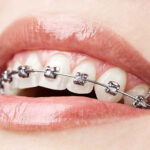
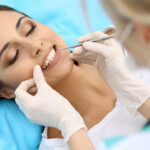
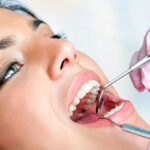

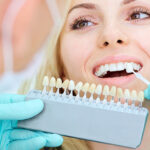



Great medical office, Easy accessible, prime location, wonderful and warm experience from start to finish. Appreciate Dr. Rohit taking time to go over the diagnosis clearly and treatment options. His diagnosis is perfect and precise. Neolife Children & Dental Hospital is best option to get treat with your health issues. Dr. Monalisa is at her best. She is always friendly, thoughtful, and puts our concerns first. Best dentist & Surgeon for your Teeth Problems. Excellent Experience!!!
Shishir Khandare